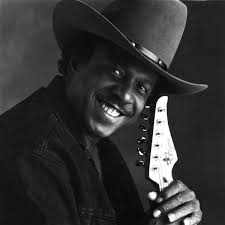
Hello!
This CD review was originally published in the July 23, 2015 edition of Blues Blast Magazine. Be sure to check out the rest of the magazine at www.bluesblastmagazine.com
Niecie – The Other Side | Album Review
Self-release through Ride the Tiger Records
www.niecie.net
13 tracks / 48:08
Detroit is a truly soulful city; if you stop into most any bar there you will surely hear killer Motown on the jukebox, or if you are lucky, discover a fine band on the stage. This is the musical environment that inspired the amazing Niecie, whose powerful voice has been rocking the blues world since her debut album in 2005.
Niecie has lived all over the country and each locale gave her new experiences and enhanced her abilities. After growing up in the Motor City, she moved on to Chicago, Las Vegas, Los Angeles, and Boston, before finally settling down in Nashville, Tennessee. Once there she was able to take advantage of the gifted songwriting scene there, as well as the city’s population of incredibly talented producers and musicians. These folks helped her craft three solid solo albums, and there is a sampling from each on her latest disc, a compilation titled The Other Side.
As The Other Side is made up of thirteen tracks from these three different projects, there is a huge cast of characters there were involved, but besides Niecie, there was one name that kept popping up: Johnny Neel. Johnny is a first call producer and keyboard man (Allman Brothers, Gov’t Mule, and Dickey Betts), and he is also a terrific songwriter. He had a hand in all three of Niecie’s earlier projects, and you will see (and hear) that he gets some sort of credit on no less than eight songs on this album.
The opener, “Strange Way” is the first of four songs from Niecie’s 2013 release, Wanted Woman. This Neel-penned tune is a mid-tempo blues rocker that has an impressive array of Niecie’s cutting lyrics and some lovely guitar work from Chris Anderson – this lady has nothing but killer axe men on her albums! Also from this release is the spiritual funk of “God’s Got This,” the comedic hard rock of “Traffic Light,” and a touch of fusion with “Wanted Woman.” The latter is one of the standout tracks in this set, as it is a good example of Niecie’s songwriting with some tasteful Hammond and backing vocals from Johnny to bring it all together.
Niecie also included a trio of tunes from her first album, Peace of My Mind, and these songs from ten years ago guarantee that there is a good representation of all of the bluesy genres on this greatest hits disc. One favorite is the slow and heavy guitar blues of “Bed of Lies,” but the surprise hit is “I Used to Have a Brain (Then I got Married).” From the title the listener might expect a light-hearted and funny track, but Niecie is dead serious as she howls the blues on this one. Besides her voice, the highlights of this song are the killer lead guitar of Larry McCray and a take-no-prisoners horn section that was blessed with an incredibly tight arrangement.
Lastly, from somewhere in the middle of the timeline of her recording career, there is a nice selection of songs from Beyond the Surface, which was cut in 2011. Of these, Niecie wisely chose to finish her set with “Draw the Line” an upbeat rhythm and blues song that is right in her vocal wheelhouse. There is a bit of everything in this song: vintage organ, fat bass from Steve Forrest, a funky guitar ostinato and slick solo from Mike Durham, and smooth backing vocals from Crystal Tallefero. It may sound like a cliché, but ending with this song it really does leave the listener wanting more.
If you have not heard Niecie sing before, trust me when I say that she is the real deal. Her range, timing and feel are spot on, and she is a real pleasure to listen to no matter what type of music she is fronting. Check out her website for gig dates as she gets around the country quite a bit, and if she is not playing near you track down a copy of The Other Side. This is a fine set of music, and besides providing 48 minutes of soulful blues the chances are very good that it will turn you into a fan too!
Mahalo!








































